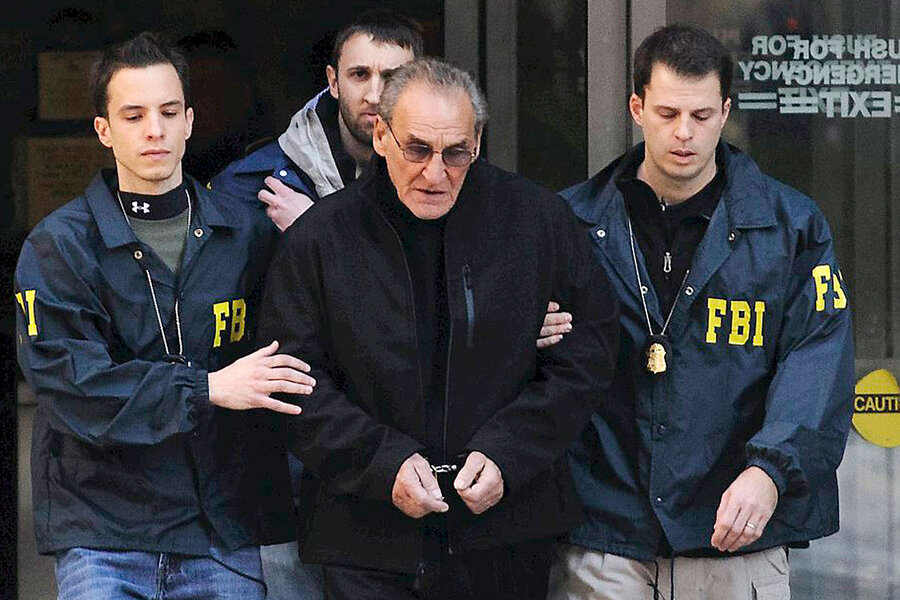'Goodfellas' mafia trial: How mobsters became history's latest has-beens
Loading...
People just don't make mobster movies like they used to, and that could be a good thing.
In a case cited for its connection to the classic gangster movie "Goodfellas," prosecutors said they had one of New York City's last free Mafia members in court at last. Vincent Asaro was accused of waiting in the decoy car with the mastermind of a 1978 robbery of a Lufthansa cargo building that netted $6 million in cash and jewelry – then the largest robbery in American history.
Prosecutors claimed Mr. Asaro was a third-generation member of the Bonanno crime family, one of New York's notorious "Five Families," who had strangled an informant with a dog chain and participated in other various crimes of robbery and murder, Joseph Ax reported for Reuters.
The jury disagreed. Mr. Asaro was arrested last year, but after a three-week trial, he went home Thursday, cleared of charges, the Associated Press reported. The 80-year-old left the courthouse where many members of New York's five crime families had been convicted and put up his arms in a gesture of victory.
"Free," he said, telling his lawyer as he left. "Sam, don't let them see the body in the trunk."
The crimes for which the government had hoped to convict Asaro featured in the movie, "Goodfellas," which received an Academy Award.
"'Goodfellas,' released 25 years ago today, might be the last great mob film," wrote David Sims for The Atlantic in September. "But as much fun as the movie is, viewers also understand why they don’t want to be gangsters: because they’re merciless, violent crooks."
In the 1970s, an Academy Award for Best Picture go to a crime flick for four years in a row: "The French Connection," "The Godfather," "The Sting," and "The Godfather Part Two." Even the movie "Goodfellas," the film about the very heist for which Asaro was just acquitted, came out in 1990.
And late 20th-century mobster movies were not idle reflections on crime. They played off the real fear that the Mafia and their ilk engendered, in the Northeast and Italy especially.
A journalist in Italy requested a police escort for him and his wife after his reports on the Italian Mafia led to threats, Reuters reported. Liro Abbate told the agency that the Mafia has killed eight journalists in Sicily alone since the 1970s.
"If I left after they put a bomb under my car, I would be setting a bad example to other Sicilians," Mr. Abbate told Reuters. "When the Mafia has problems with journalists, they kill them."
The Mafia is no longer the threat to society it once was. Although organized crime remains a focus for law enforcement agencies the world over, they have "dealt a devastating blow to organized criminal syndicates," former FBI Director Robert Mueller said at an event remembering cooperation between Italian and American law enforcement, according to a press release.
But on the same day that world leaders exulted in a success against the latest threat - the probable death of Islamic State militant “Jihadi John” in Syria - a reputed mobster left a New York courthouse shouting “Free!”
"[Asaro's trial] may be one of the last big Mafia trials, as the powerful New York Mafia members are now either old, incarcerated or both," Stephanie Clifford wrote for The New York Times. "The Mob today is but a shadow of what it used to be."
It took decades of careful work by law enforcement and society to obtain the security to mourn the great mobster movies, but in another 25 years, perhaps nobody will be making good terrorist films either.








